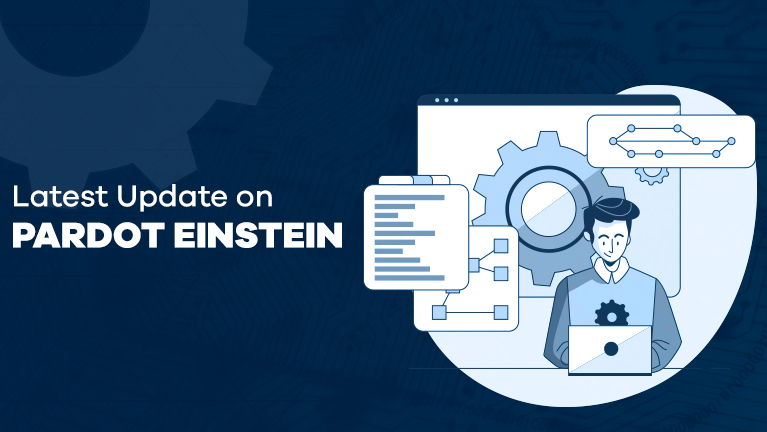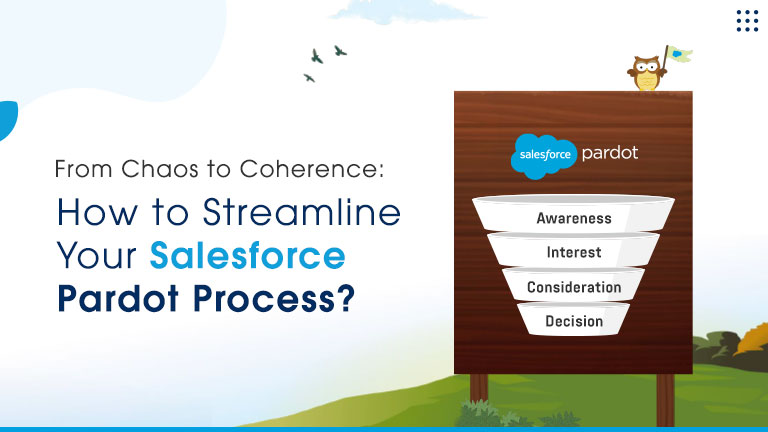AI Sales Agents Drive Revenue, Free Teams for Key Deals Learn more

The collection of AI-powered features for Pardot marketing automation is known as Pardot Einstein. The feature collection includes Einstein Attribution, Einstein Campaign Insights, Einstein Lead Scoring, and Einstein Behaviour Scoring. The leading goal of this technology is to find deeply buried patterns in engagement data. It also recognises themes and takes actions like making recommendations to users.
Pardot Einstein takes data from Pardot marketing and then in-building fresh stops. It’s extremely mind-blowing, how a couple of features(Einstein Behavior Scoring, Einstein Lead Scoring) are enhancing existing functionality. On the other side, Einstein Campaign Insights and Einstein Attribution are introducing entirely new concepts. We can say, it’s a natural progression from rules-based to AI-based functionality. However, all 4 are essential for business future planning.
According to Alon Shov (Product Manager at Salesforce Pardot): AI-enabled features work below the hood for laymen. In this article, we will discuss all 4 Products with their latest updates.
4 Product of Pardot Einstein-
1. Einstein Behavior Scoring- Einstein Behavior Scoring is a Pardot Einstein feature that looks at a prospect’s engagement in terms of ‘ready to buy’ behaviour. Over time, the Einstein ‘engagement model’ learns what patterns of marketing touchpoints lead to a purchase, and when it spots these positive insights with other prospects, increases their score too.
Breaking it up in two parts-
- Pattern of engagement
- Buying signals
What does it perform?
- Check each prospect of and Pardot activities such as engagement history.
- Identify the activities to list the positive and negative signals.
- Trains a machine learning model that scores each prospect based through the probability of conversion.
- Rank each prospect 0 to100 accordingly how they compare to all other prospects in your database.
2. Einstein Lead Scoring- Score leads according to how they fit in your successful conversation pattern.
What does it perform?
- Look at each lead and their field data, both custom and standard.
- Identify field data (If it's a positive signal or negative)
- Trains a machine learning model that scores each lead based through the probability of conversion.
- Rank each lead 0 to100 accordingly how they compare to all other prospects in your database.
3. Campaign Insights - It treads in prospect demographic and marketing asset engagement. It analyzes the entire marketing asset dataset eg. compares specific campaign email engagements with all organisation background emails stored. It shares your campaign prospects into segments such as job title, account industry, country – and describes differences between them.
It asks for two questions:
- what is special about this prospecting activity in this particular campaign V.s all other campaigns?
- In terms of engagement patterns, who is the most interesting segment within a specific campaign?
What does it perform?
- Analyzes prospects engagement activity with different marketing assets.
- Examine key Prospects’ attributes such as job title, location and company industry.
- Check for anomalies, both positive and negative, in the engagement data.
- Covers the most meaningful ones in the shape of Campaign Insights.
4. Einstein Attribution- It’s a rule-based influence model, and the first touch/ last touch/ even touch Campaign influence model. This model relies on data relationship and timing, which makes this way of measurement less accurate overall.
What does it perform?
- It will take you one step closer to the holy grail of accurate marketing attribution, by picking up gaps in attribution.
- By using an AI data-driven model that “attributes revenue share based on your actual customers, their engagement, and your successes”.
Why use Pardot Einstein?
While buying Pardot Einstein Products, some questions are normal to cross your mind. Such as: should I buy Pardot Einstein? What cost should I pay for this? Why use it?
Well, in this segment of the article, we will answer all your questions, scroll down.
- The Pardot Einstein is available for advanced customers only.
- It overcomes limitations with rule-based features.
- Take urgent actions to large datasets.
- Provides explanation
At last, it can be said that the ultimate goal of Pardot Einstein is to find patterns in engagement data. Each product of Pardot Einstein has its features to make the process more efficient. Still, have questions related to Pardot Einstein and its products? Or searching for Salesforce Services, Hire us today!.




